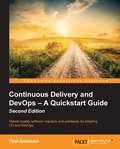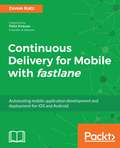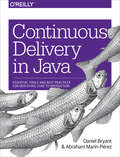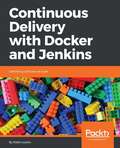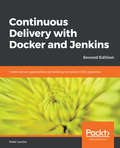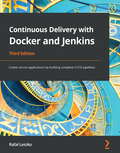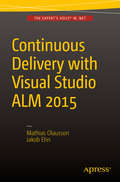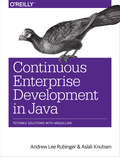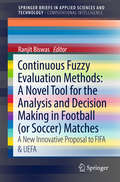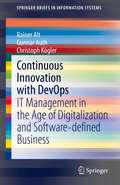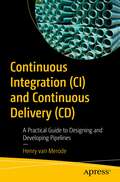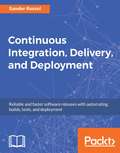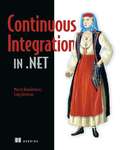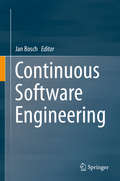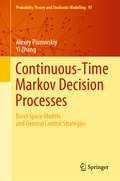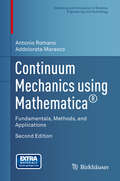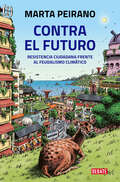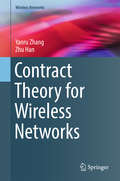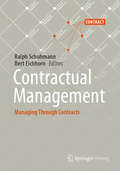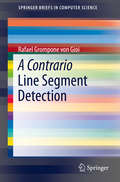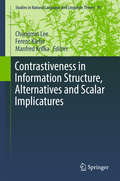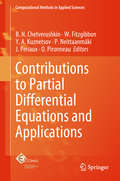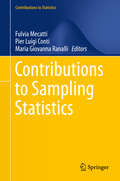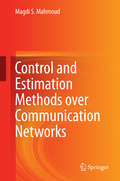- Table View
- List View
Continuous Delivery and DevOps – A Quickstart Guide - Second Edition
by Paul SwartoutIf you are an IT professional, software developer, or system administrator who wants to understand how to ship quality software regularly, effectively and efficiently, this book is for you. Previous knowledge of DevOps practices, Continuous Delivery, or using DevOps tools is not necessary.
Continuous Delivery for Mobile with fastlane: Automating mobile application development and deployment for iOS and Android
by Kyle Mew Doron KatzLearn continuous deployment and automation with code-signing, continuous testing, building, deploying, and releasing of your app. Key Features A practical guide on automating your mobile development pipeline with Fastlane, Jenkins, and Slack. Build, test, run and deploy your mobile application release with this end to end guide. Implement Continuous Integration, delivery, and deployment practices to optimize your application development workflow for faster and efficient release builds. Book Description Competitive mobile apps depend strongly on the development team’s ability to deliver successful releases, consistently and often. Although continuous integration took a more mainstream priority among the development industry, companies are starting to realize the importance of continuity beyond integration and testing. This book starts off with a brief introduction to fastlane—a robust command-line tool that enables iOS and Android developers to automate their releasing workflow. The book then explores and guides you through all of its features and utilities; it provides the reader a comprehensive understanding of the tool and how to implement them. Themes include setting up and managing your certificates and provisioning and push notification profiles; automating the creation of apps and managing the app metadata on iTunes Connect and the Apple Developer Portal; and building, distributing and publishing your apps to the App Store. You will also learn how to automate the generation of localized screenshots and mesh your continuous delivery workflow into a continuous integration workflow for a more robust setup. By the end of the book, you will gain substantial knowledge on delivering bug free, developer-independent, and stable application release cycle. What you will learn Harness the fastlane tools for the Continuous Deployment strategy Integrate Continuous Deployment with existing Continuous Integration. Automate upload of screenshots across all device screen-sizes Manage push notifications, provisioning profiles, and code-signing certificates Orchestrate automated build and deployments of new versions of your app Regulate your TestFlight users and on-board new testersWho this book is for This book is intended for mobile developers who are keen on incorporating Continuous integration and deployment practices in their workflow.
Continuous Delivery in Java: Essential Tools and Best Practices for Deploying Code to Production
by Daniel Bryant Abraham Marín-PérezContinuous delivery adds enormous value to the business and the entire software delivery lifecycle, but adopting this practice means mastering new skills typically outside of a developer’s comfort zone. In this practical book, Daniel Bryant and Abraham Marín-Pérez provide guidance to help experienced Java developers master skills such as architectural design, automated quality assurance, and application packaging and deployment on a variety of platforms.Not only will you learn how to create a comprehensive build pipeline for continually delivering effective software, but you’ll also explore how Java application architecture and deployment platforms have affected the way we rapidly and safely deliver new software to production environments.Get advice for beginning or completing your migration to continuous deliveryDesign architecture to enable the continuous delivery of Java applicationsBuild application artifacts including fat JARs, virtual machine images, and operating system container (Docker) imagesUse continuous integration tooling like Jenkins, PMD, and find-sec-bugs to automate code quality checksCreate a comprehensive build pipeline and design software to separate the deploy and release processesExplore why functional and system quality attribute testing is vital from development to deliveryLearn how to effectively build and test applications locally and observe your system while it runs in production
Continuous Delivery with Docker and Jenkins
by Rafał Leszko<P><P>Unleash the combination of Docker and Jenkins in order to enhance the DevOps workflow <P><P>Key Features <P><P>Build reliable and secure applications using Docker containers. <P><P>Create a complete Continuous Delivery pipeline using Docker, Jenkins, and Ansible. <P><P>Deliver your applications directly on the Docker Swarm cluster. <P><P>Create more complex solutions using multi-containers and database migrations. <P><P>Book Description <P><P>The combination of Docker and Jenkins improves your Continuous Delivery pipeline using fewer resources. It also helps you scale up your builds, automate tasks and speed up Jenkins performance with the benefits of Docker containerization. <P><P>This book will explain the advantages of combining Jenkins and Docker to improve the continuous integration and delivery process of app development. It will start with setting up a Docker server and configuring Jenkins on it. It will then provide steps to build applications on Docker files and integrate them with Jenkins using continuous delivery processes such as continuous integration, automated acceptance testing, and configuration management. <P><P>Moving on you will learn how to ensure quick application deployment with Docker containers along with scaling Jenkins using Docker Swarm. Next, you will get to know how to deploy applications using Docker images and testing them with Jenkins. <P><P>By the end of the book, you will be enhancing the DevOps workflow by integrating the functionalities of Docker and Jenkins. <P><P>What you will learn <P><P>Get to grips with docker fundamentals and how to dockerize an application for the Continuous Delivery process <P><P>Configure Jenkins and scale it using Docker-based agents <P><P>Understand the principles and the technical aspects of a successful Continuous Delivery pipeline <P><P>Create a complete Continuous Delivery process using modern tools: Docker, Jenkins, and Ansible <P><P>Write acceptance tests using Cucumber and run them in the Docker ecosystem using Jenkins <P><P>Create multi-container applications using Docker Compose <P><P>Managing database changes inside the Continuous Delivery process and understand effective frameworks such as Cucumber and Flyweight <P><P>Build clustering applications with Jenkins using Docker Swarm <P><P>Publish a built Docker image to a Docker Registry and deploy cycles of Jenkins pipelines using community best practices
Continuous Delivery with Docker and Jenkins: Create secure applications by building complete CI/CD pipelines, 2nd Edition
by Rafał LeszkoCreate a complete Continuous Delivery process using modern DevOps tools such as Docker, Kubernetes, Jenkins, Docker Hub, Ansible, GitHub and many more.Key FeaturesBuild reliable and secure applications using Docker containers.Create a highly available environment to scale a Docker servers using KubernetesImplement advance continuous delivery process by parallelizing the pipeline tasksBook DescriptionContinuous Delivery with Docker and Jenkins, Second Edition will explain the advantages of combining Jenkins and Docker to improve the continuous integration and delivery process of an app development. It will start with setting up a Docker server and configuring Jenkins on it. It will then provide steps to build applications on Docker files and integrate them with Jenkins using continuous delivery processes such as continuous integration, automated acceptance testing, and configuration management.Moving on, you will learn how to ensure quick application deployment with Docker containers along with scaling Jenkins using Kubernetes. Next, you will get to know how to deploy applications using Docker images and testing them with Jenkins. Towards the end, the book will touch base with missing parts of the CD pipeline, which are the environments and infrastructure, application versioning, and nonfunctional testing.By the end of the book, you will be enhancing the DevOps workflow by integrating the functionalities of Docker and Jenkins.What you will learnGet to grips with docker fundamentals and how to dockerize an application for the CD processLearn how to use Jenkins on the Cloud environmentsScale a pool of Docker servers using KubernetesCreate multi-container applications using Docker ComposeWrite acceptance tests using Cucumber and run them in the Docker ecosystem using JenkinsPublish a built Docker image to a Docker Registry and deploy cycles of Jenkins pipelines using community best practicesWho this book is forThe book targets DevOps engineers, system administrators, docker professionals or any stakeholders who would like to explore the power of working with Docker and Jenkins together. No prior knowledge of DevOps is required for this book.
Continuous Delivery with Docker and Jenkins: Create secure applications by building complete CI/CD pipelines, 3rd Edition
by Rafal LeszkoCreate a complete continuous delivery process using modern DevOps tools such as Docker, Jenkins, Kubernetes, Ansible, Terraform, and many moreKey FeaturesBuild reliable and secure applications using Docker containersCreate a highly available environment to scale Jenkins and your services using KubernetesAutomate your release process end-to-endBook DescriptionThis updated third edition of Continuous Delivery with Docker and Jenkins will explain the advantages of combining Jenkins and Docker to improve the continuous integration and delivery process of app development. You'll start by setting up a Docker server and configuring Jenkins on it. Next, you'll discover steps for building applications and microservices on Dockerfiles and integrating them with Jenkins using continuous delivery processes such as continuous integration, automated acceptance testing, configuration management, and Infrastructure as Code. Moving ahead, you'll learn how to ensure quick application deployment with Docker containers, along with scaling Jenkins using Kubernetes. Later, you'll explore how to deploy applications using Docker images and test them with Jenkins. Toward the concluding chapters, the book will focus on missing parts of the CD pipeline, such as the environments and infrastructure, application versioning, and non-functional testing. By the end of this continuous integration and continuous delivery book, you'll have gained the skills you need to enhance the DevOps workflow by integrating the functionalities of Docker and Jenkins.What you will learnGrasp Docker fundamentals and dockerize applications for the CD processUnderstand how to use Jenkins on-premises and in the cloudScale a pool of Docker servers using KubernetesWrite acceptance tests using CucumberRun tests in the Docker ecosystem using JenkinsProvision your servers and infrastructure using Ansible and TerraformPublish a built Docker image to a Docker registryDeploy cycles of Jenkins pipelines using community best practicesWho this book is forThe book is for DevOps engineers, system administrators, Docker professionals, or anyone who wants to explore the power of working with Docker and Jenkins together. No prior knowledge of DevOps is required to get started.
Continuous Delivery with Visual Studio ALM 2015
by Jakob Ehn Mathias OlaussonThis book is the authoritative source on implementing Continuous Delivery practices using Microsoft's Visual Studio and TFS 2015. Microsoft MVP authors Mathias Olausson and Jakob Ehn translate the theory behind this methodology and show step by step how to implement Continuous Delivery in a real world environment. Building good software is challenging. Building high-quality software on a tight schedule can be close to impossible. Continuous Delivery is an agile and iterative technique that enables developers to deliver solid, working software in every iteration. Continuous delivery practices help IT organizations reduce risk and potentially become as nimble, agile, and innovative as startups. What you'll learn What Continuous Delivery is and how to use it to create better software more efficiently using Visual Studio 2015 How to use Team Foundation Server 2015 and Visual Studio Online to plan, design and implement powerful and reliable deployment pipelines Detailed step by step instructions for implementing Continuous Delivery on a real project Who this book is for Developers, Release Engineers, Architects, Product Managers Table of Contents 1. Introduction to Continuous Delivery 2. Overview of Visual Studio ALM 2015 3. Designing an application for Continuous Delivery 4. Managing the Release Process 5. Source Control Management 6. PowerShell for Deployment 7. Build Automation 8. Managing Code Quality 9. Continuous Testing 10. Building a deployment pipeline 11. Measure and learn
Continuous Enterprise Development in Java
by Aslak Knutsen Andrew Lee RubingerLearn a use-case approach for developing Java enterprise applications in a continuously test-driven fashion. With this hands-on guide, authors and JBoss project leaders Andrew Lee Rubinger and Aslak Knutsen show you how to build high-level components, from persistent storage to the user interface, using the Arquillian testing platform and several other JBoss projects and tools.Through the course of the book, you'll build a production-ready software conference tracker called GeekSeek, using source code from GitHub. Rubinger and Knutsen demonstrate why testing is the very foundation of development--essential for ensuring that code is consumable, complete, and correct.Bootstrap an elementary Java EE project from start to finish before diving into the full-example application, GeekSeekUse both relational and NoSQL storage models to build and test GeekSeek's data persistence layersTackle testable business logic development and asynchronous messaging with an SMTP serviceExpose enterprise services as a RESTful interface, using Java EE's JAX-RS frameworkImplement OAuth authentication with JBoss's PicketLink identity management serviceValidate the UI by automating interaction in the browser and reading the rendered pagePerform full-scale integration testing on the final deployable archive
Continuous Fuzzy Evaluation Methods: A Novel Tool for the Analysis and Decision Making in Football (or Soccer) Matches
by Ranjit BiswasThis book presents a proposal for a new soft computing innovative method called by “CFE” forevaluation of the football matches of FIFA(IFAB) and UEFA to compute the true ‘Winner’. It is a research work in the area of ‘Football Science’, being proposed to FIFA (IFAB) and UEFA, Zurich, Switzerland for consideration to replace the existing obsolete and weak rules of football matches of 90 minutes to declare the final ‘Winner’. In CFE, the final decision about any football match of 90 minutes is obtained “by computation”, by execution of a software called by ‘CFE-software’ with the real time input values directly from the field on a number of highly significant parameters, some of them being continuous variables. The result of m-n goals at the end of 90 minutes play in a football match is just one of the many parameters for the computation of the ‘Winner’ in our proposed CFE method. The evaluation is mainly based upon the application of Fuzzy Logic, ‘Fuzzy Pocket Machine’, fast Computer Server, good Communication system from playing-field to the server (as used in Cricket matches) and the CFE-software at the server. The Referees need not be experts in fuzzy set theory; they can be easily trained within just 30 minutes of demonstration on : how to use the ‘fuzzy pocket machine’ for giving real time inputs to the database at the server.
Continuous Innovation with DevOps: IT Management in the Age of Digitalization and Software-defined Business (SpringerBriefs in Information Systems)
by Rainer Alt Gunnar Auth Christoph KöglerThis book connects the new world of digitalization with classic IT management. With the presence of software in objects, products and processes, most businesses will become software-defined businesses. Software development and software management are thus key to stay competitive in an environment that demands continuous innovation. The authors provide a comprehensive introduction to continuous innovation, the DevOps concept and lay the foundations of an innovation-oriented IT management. The DevOps approach to continuous innovation, which combines lean and agile concepts with an automated tool chain, enables solutions that synergize fast (re)action through digital innovation on the one hand and long-term development cycles and stable operation on the other. A comprehensive case study of T-Systems MMS, a digital service provider from Deutsche Telekom in Germany, illustrates the use of this approach in practice.
Continuous Integration (CI) and Continuous Delivery (CD): A Practical Guide to Designing and Developing Pipelines
by Henry van MerodeUse continuous Integration (CI) and continuous delivery (CD) to improve the speed of software delivery. This book presents a game changer—how to use pipelines to automate the software delivery process. The theories about CI/CD are much the same, but the book covers what the development of pipelines looks like and how testing of pipelines themselves should be performed.Most teams just plunge into coding, without thinking about the CI/CD process itself. Why don’t we use the same development method for pipelines that we use for apps? Pipelines code development undergoes similar stages as application code development, such as requirements analysis, development, testing, implementation, operations, and monitoring. This is the starting point of the book. It describes the current challenges with pipeline development and how this process can be improved and structured. It describes in detail how to design pipelines and shows examples in BPMN 2.0 notation. What You’ll Learn Know the shortcomings and challenges of current pipeline development such as misalignment between the pipeline engineer and the team’s workflow, the use of infrastructure as code (IaC), and pipeline securityUnderstand the need for CI/CD requirements through the book's non-exhaustive list of more than 60 CI/CD requirements provided to inspire and increase awarenessSee how certain choices affect the way a pipeline is designed (and realized)Become familiar with branching strategy, build strategy, test strategy, release strategy, and deployment strategy that are explained in detail in the book, including their effect on pipeline designKnow how pipelines can be unit tested, using a real-world exampleKnow how performance bottlenecks in a pipeline occur, how they can be detected, and how they can be solvedView a complete implementation, including code, showing how the guidelines in this book are applied to a real use case Who This Book Is For DevOps engineers and solution architects involved with automating the software supply chain and using application lifecycle management (ALM)/integration platforms such as Jenkins, CircleCI, Bamboo, and Azure DevOps; intermediate and experienced DevOps engineers (developers, ops engineers, test engineers); and ICT managers interested in the CI/CD pipeline development domain
Continuous Integration, Delivery, and Deployment
by Sander RosselGetting started with the processes and the tools to continuously deliver high-quality software About This Book • Incorporate popular development practices to prevent messy code • Automate your build, integration, release, and deployment processes with Jenkins, Git, and Gulp?and learn how continuous integration (CI) can save you time and money • Gain an end-to-end overview of Continuous Integration using different languages (JavaScript and C#) and tools (Gulp and Jenkins) Who This Book Is For This book is for developers who want to understand and implement Continuous Integration and Delivery in their daily work. A basic knowledge of at least JavaScript and HTML/CSS is required. Knowing C# and SQL will come in handy. Most programmers who have programmed in a (compiled) C-like language will be able to follow along. What You Will Learn • Get to know all the aspects of Continuous Integration, Deployment, and Delivery • Find out how Git can be used in a CI environment • Set up browser tests using Karma and Selenium and unit tests using Jasmine • Use Node.js, npm, and Gulp to automate tasks such as linting, testing, and minification • Explore different Jenkins jobs to integrate with Node.js and C# projects • Perform Continuous Delivery and Deployment using Jenkins • Test and deliver a web API In Detail The challenge faced by many teams while implementing Continuous Deployment is that it requires the use of many tools and processes that all work together. Learning and implementing all these tools (correctly) takes a lot of time and effort, leading people to wonder whether it's really worth it. This book sets up a project to show you the different steps, processes, and tools in Continuous Deployment and the actual problems they solve. We start by introducing Continuous Integration (CI), deployment, and delivery as well as providing an overview of the tools used in CI. You'll then create a web app and see how Git can be used in a CI environment. Moving on, you'll explore unit testing using Jasmine and browser testing using Karma and Selenium for your app. You'll also find out how to automate tasks using Gulp and Jenkins. Next, you'll get acquainted with database integration for different platforms, such as MongoDB and PostgreSQL. Finally, you'll set up different Jenkins jobs to integrate with Node.js and C# projects, and Jenkins pipelines to make branching easier. By the end of the book, you'll have implemented Continuous Delivery and deployment from scratch. Style and approach This practical book takes a step-by-step approach to explaining all the concepts of Continuous Integration and delivery, and how it can help you deliver a high-quality product.
Continuous Integration in .NET
by Craig Berntson Marcin KawalerowiczContinuous integration is a software engineering process designed to minimize "integration hell." It's a coordinated development approach that blends the best practices in software delivery. For .NET developers, especially, adopting these new approaches and the tools that support them can require rethinking the development process altogether.Continuous Integration in .NET is a tutorial for developers and team leads that teaches readers how to re-imagine their development strategy by creating a consistent continuous integration process. This book shows how to build on the tools they already know - .NET Framework and Visual Studio - and to use powerful software like MSBuild, Subversion, TFS 2010, Team City, CruiseControl.NET, NUnit, and Selenium. Purchase of the print book comes with an offer of a free PDF, ePub, and Kindle eBook from Manning. Also available is all code from the book.
Continuous Software Engineering
by Jan BoschThis book provides essential insights on the adoption of modern software engineering practices at large companies producing software-intensive systems, where hundreds or even thousands of engineers collaborate to deliver on new systems and new versions of already deployed ones. It is based on the findings collected and lessons learned at the Software Center (SC), a unique collaboration between research and industry, with Chalmers University of Technology, Gothenburg University and Malmö University as academic partners and Ericsson, AB Volvo, Volvo Car Corporation, Saab Electronic Defense Systems, Grundfos, Axis Communications, Jeppesen (Boeing) and Sony Mobile as industrial partners. The 17 chapters present the "Stairway to Heaven" model, which represents the typical evolution path companies move through as they develop and mature their software engineering capabilities. The chapters describe theoretical frameworks, conceptual models and, most importantly, the industrial experiences gained by the partner companies in applying novel software engineering techniques. The book's structure consists of six parts. Part I describes the model in detail and presents an overview of lessons learned in the collaboration between industry and academia. Part II deals with the first step of the Stairway to Heaven, in which R&D adopts agile work practices. Part III of the book combines the next two phases, i. e. , continuous integration (CI) and continuous delivery (CD), as they are closely intertwined. Part IV is concerned with the highest level, referred to as "R&D as an innovation system," while Part V addresses a topic that is separate from the Stairway to Heaven and yet critically important in large organizations: organizational performance metrics that capture data, and visualizations of the status of software assets, defects and teams. Lastly, Part VI presents the perspectives of two of the SC partner companies. The book is intended for practitioners and professionals in the software-intensive systems industry, providing concrete models, frameworks and case studies that show the specific challenges that the partner companies encountered, their approaches to overcoming them, and the results. Researchers will gain valuable insights on the problems faced by large software companies, and on how to effectively tackle them in the context of successful cooperation projects.
Continuous-Time Markov Decision Processes: Borel Space Models and General Control Strategies (Probability Theory and Stochastic Modelling #97)
by Alexey Piunovskiy Yi ZhangThis book offers a systematic and rigorous treatment of continuous-time Markov decision processes, covering both theory and possible applications to queueing systems, epidemiology, finance, and other fields. Unlike most books on the subject, much attention is paid to problems with functional constraints and the realizability of strategies.Three major methods of investigations are presented, based on dynamic programming, linear programming, and reduction to discrete-time problems. Although the main focus is on models with total (discounted or undiscounted) cost criteria, models with average cost criteria and with impulsive controls are also discussed in depth.The book is self-contained. A separate chapter is devoted to Markov pure jump processes and the appendices collect the requisite background on real analysis and applied probability. All the statements in the main text are proved in detail.Researchers and graduate students in applied probability, operational research, statistics and engineering will find this monograph interesting, useful and valuable.
Continuum Mechanics using Mathematica®: Fundamentals, Methods, and Applications (Modeling and Simulation in Science, Engineering and Technology)
by Antonio Romano Addolorata MarascoThis textbook's methodological approach familiarizes readers with the mathematical tools required to correctly define and solve problems in continuum mechanics. Covering essential principles and fundamental applications, this second edition of Continuum Mechanics using Mathematica® provides a solid basis for a deeper study of more challenging and specialized problems related to nonlinear elasticity, polar continua, mixtures, piezoelectricity, ferroelectricity, magneto-fluid mechanics and state changes (see A. Romano, A. Marasco, Continuum Mechanics: Advanced Topics and Research Trends, Springer (Birkhäuser), 2010, ISBN 978-0-8176-4869-5). Key topics and features: * Concise presentation strikes a balance between fundamentals and applications * Requisite mathematical background carefully collected in two introductory chapters and one appendix * Recent developments highlighted through coverage of more significant applications to areas such as wave propagation, fluid mechanics, porous media, linear elasticity. This second edition expands the key topics and features to include: * Two new applications of fluid dynamics: meteorology and navigation * New exercises at the end of the existing chapters * The packages are rewritten for Mathematica 9 Continuum Mechanics using Mathematica®: Fundamentals, Applications and Scientific Computing is aimed at advanced undergraduates, graduate students and researchers in applied mathematics, mathematical physics and engineering. It may serve as a course textbook or self-study reference for anyone seeking a solid foundation in continuum mechanics.
Contra el futuro: Resistencia ciudadana frente al feudalismo climático
by Marta PeiranoTras advertirnos de los peligros de internet, vuelve Marta Peirano con un nuevo relato antiapocalíptico para construir un futuro esperanzador. Es la historia más vieja del mundo: la de un desastre medioambiental y una tecnología que nos salva. La hemos repetido como un mantra desde el principio de los tiempos porque hasta ahora se ha revelado cierta; somos el animal más peligroso de la sabana, hemos vencido a las bestias, a las tormentas y a la enfermedad. Pero la estrategia evolutiva que nos ha mantenido vivos desde el principio de la misma vida nos empuja ahora al borde de la extinción. Estamos tan atrapados que ya nos parece inevitable. No es un problema técnico. Hay soluciones a nuestro alcance para frenar el calentamiento global. Pero las grandes tecnologías de nuestro tiempo no pueden ayudarnos a gestionar la crisis climática, porque no están diseñadas para ello, sino para gestionarnos a nosotros durante la crisis climática. Este libro habla de las estrategias de acción ciudadana para hacer frente a la aceleración del feudalismo climático y el capitalismo desastre. Un nuevo relato antiapocalíptico para construir un futuro esperanzador. La crítica ha dicho:«Una de las raras periodistas que realmente se ha especializado en la intersección de la tecnología y el poder».Edward Snowden «Marta Peirano es una de las voces más respetadas en nuestro país sobre privacidad y seguridad en internet».Manuel Ángel Méndez, El Confidencial «Marta Peirano es una incitadora a la resistencia ciudadana. Es la única periodista que analiza la relación entre la Tecnología y el Poder».Mamen Mendizábal
Contract Theory for Wireless Networks (Wireless Networks)
by Zhu Han Yanru ZhangThis book presents theoretical research between wireless communications, networking, and economics using the framework of contract theory. This work fills a void in the literature by closely combining contract theoretical approaches with wireless networks design problems. Topics covered include classification in contract theory, reward design, adverse selection, and moral hazard. The authors also explore incentive mechanisms for device-to-device communication in cellular networks, insurance plans for service assurance in cloud computing markets with incomplete information, multi-dimensional incentive mechanisms and tournament based incentive mechanisms in mobile crowdsourcing. Financial applications include financing contracts with adverse selection for spectrum trading in cognitive radio networks and complementary investment of infrastructure and service providers in wireless network visualization. This book offers a useful reference for engineers and researchers in the wireless communication community who seek to integrate the notions from contract theory and wireless engineering, while emphasizing on how contract theory can be applied in wireless networks. It is also suitable for advanced-level students studying information systems or communications engineering.
Contractual Management: Managing Through Contracts
by Ralph Schuhmann Bert EichhornThe Concept Contractual Management offers a holistic approach to managerial decision-making based on contracts or business processes that are related to contracts. It explains management from the point of view of the contract, just as it interprets the contract from the point of view of management. Thus, the approach highlights the great inherent potential of contracts for managing companies, transactions and business relationships. The book addresses students as well as practitioners and gives insights into the usage of contracts to manage companies or relationships. It covers contract handling from preliminary deliberations to negotiations, implementation, and all the way to the evaluation of the contract within the company. Furthermore, it provides competencies to design and implement a contract and to organize the relevant processes. The Content In Part 1, the book explains the theoretical foundations of Contractual Management; in Part 2, the application of the approach is illustrated through case studies which cover various sectors, industries, company sizes, contract types, and management situations. Theory part: Contractual Management – A Holistic Approach to a Diverse Issue. Case study part: 11 case studies arranged according to specific contract-related topics: Information and Communication – Change – Enterprise Networks – Conflict – Accounting and Financing – Legal Compliance – Societal Steering. The Editors Professor Dr. Ralph Schuhmann: After holding a senior management position in industry, Ralph Schuhmann now teaches Business Law at Ernst-Abbe-Hochschule in Jena, Germany. He is the scientific director of the Contractual Management Institute at SRH Hochschule Berlin and has published various articles on contract law and contract management. Professor Dr. Bert Eichhorn: Before his appointment as professor for International Law and Business Law at SRH Hochschule Berlin, Bert Eichhorn worked as a legal consultant at the EU Parliament and as a lawyer. He has published numerous articles in national and international scientific journals in the area of contract management and international law. He is the managing director of the Contractual Management Institute at SRH Hochschule Berlin.
A Contrario Line Segment Detection (SpringerBriefs in Computer Science)
by Rafael Grompone von GioiThe reliable detection of low-level image structures is an old and still challenging problem in computer vision. This book leads a detailed tour through the LSD algorithm, a line segment detector designed to be fully automatic. Based on the a contrario framework, the algorithm works efficiently without the need of any parameter tuning. The design criteria are thoroughly explained and the algorithm's good and bad results are illustrated on real and synthetic images. The issues involved, as well as the strategies used, are common to many geometrical structure detection problems and some possible extensions are discussed.
Contrastive Analysis of Discourse-pragmatic Aspects of Linguistic Genres (Yearbook of Corpus Linguistics and Pragmatics #5)
by Karin Aijmer Diana LewisThis volume will give readers insight into how genres are characterised by the patterns of frequency and distribution of linguistic features across a number of European languages. The material presented in this book will also stimulate further corpus-based contrastive research including more languages, more genres and different types of corpora. This is the first special issue of the Yearbook of Corpus Linguistics and Pragmatics, a publication that addresses the interface between the two disciplines and offers a platform to scholars who combine both methodologies to present rigorous and interdisciplinary findings about language in real use. Corpus linguistics and Pragmatics have traditionally represented two paths of scientific thought, parallel but often mutually exclusive and excluding. Corpus Linguistics can offer a meticulous methodology based on mathematics and statistics, while Pragmatics is characterized by its effort in the interpretation of intended meaning in real language.
Contrastiveness in Information Structure, Alternatives and Scalar Implicatures (Studies in Natural Language and Linguistic Theory #91)
by Ferenc Kiefer Chungmin Lee Manfred KrifkaA group of authors containing both leading authorities and young researchers addresses a number of issues of contrastiveness, polarity items and exhaustivity, quantificational expressions and the implicatures they generate, and the interaction between semantic operators and speech acts. The 19 contributions provide insights on the interplay between semantics and pragmatics. The volume's reach is cross-linguistic and takes an unorthodox multi-paradigm approach. Languages studied range from European languages including Hungarian and Russian to East Asian languages such as Japanese and Korean, with rich data on focus and discourse particles. This volume contributes to a major area of research in linguistics of the last decade, and provides novel, state-of-the-art views on some of the central topics in linguistic research, and will appeal to an audience of graduate and advanced undergraduate researchers in linguistics, philosophy of language and computational linguistics.
Contributions to Partial Differential Equations and Applications (Computational Methods in Applied Sciences #47)
by O. Pironneau J. Periaux P. Neittaanmäki Y. A. Kuznetsov W. Fitzgibbon B. N. ChetverushkinThis book treats Modelling of CFD problems, Numerical tools for PDE, and Scientific Computing and Systems of ODE for Epidemiology, topics that are closely related to the scientific activities and interests of Prof. William Fitzgibbon, Prof. Yuri Kuznetsov, and Prof. O. Pironneau, whose outstanding achievements are recognised in this volume. It contains 20 contributions from leading scientists in applied mathematics dealing with partial differential equations and their applications to engineering, ab-initio chemistry and life sciences. It includes the mathematical and numerical contributions to PDE for applications presented at the ECCOMAS thematic conference "Contributions to PDE for Applications" held at Laboratoire Jacques Louis Lions in Paris, France, August 31- September 1, 2015, and at the Department of Mathematics, University of Houston, Texas, USA, February 26-27, 2016. This event brought together specialists from universities and research institutions who are developing or applying numerical PDE or ODE methods with an emphasis on industrial and societal applications. This volume is of interest to researchers and practitioners as well as advanced students or engineers in applied and computational mathematics. All contributions are written at an advanced scientific level with no effort made by the editors to make this volume self-contained. It is assumed that the reader is a specialist already who knows the basis of this field of research and has the capability of understanding and appreciating the latest developments in this field.
Contributions to Sampling Statistics (Contributions to Statistics)
by Fulvia Mecatti Pier Luigi Conti Maria Giovanna RanalliThis book contains a selection of the papers presented at the ITACOSM 2013 Conference, held in Milan in June 2013 It is intended as an international forum of scientific discussion on the developments of theory and application of survey sampling methodologies and applications in human and natural sciences. The book gathers research papers carefully selected from both invited and contributed sessions of the conference. The whole book appears to be a relevant contribution to various key aspects of sampling methodology and techniques; it deals with some hot topics in sampling theory, such as calibration, quantile-regression and multiple frame surveys and with innovative methodologies in important topics of both sampling theory and applications Contributions cut across current sampling methodologies such as interval estimation for complex samples, randomized responses, bootstrap, weighting, modeling, imputation, small area estimation and effective use of auxiliary information; applications cover a wide and enlarging range of subjects in official household surveys, Bayesian networks, auditing, business and economic surveys, geostatistics and agricultural statistics. The book is an updated, high level reference survey addressed to researchers, professionals and practitioners in many fields.
Control and Estimation Methods over Communication Networks
by Magdi S. MahmoudThis book provides a rigorous framework in which to study problems in the analysis, stability and design of networked control systems. Four dominant sources of difficulty are considered: packet dropouts, communication bandwidth constraints, parametric uncertainty, and time delays. Past methods and results are reviewed from a contemporary perspective, present trends are examined, and future possibilities proposed. Emphasis is placed on robust and reliable design methods. New control strategies for improving the efficiency of sensor data processing and reducing associated time delay are presented. The coverage provided features: · an overall assessment of recent and current fault-tolerant control algorithms; · treatment of several issues arising at the junction of control and communications; · key concepts followed by their proofs and efficient computational methods for their implementation; and · simulation examples (including TrueTime simulations) to provide hands-on experience. In addition to the theoretical coverage, the author describes a number of applications that demonstrate the real-world relevance of this material, and these include: · a servo system; · a triple inverted pendulum; · power system control; · wireless control of a cart with inverted pendulum and wireless servo application with emphasis on controller area networks; and · switched ethernet and wireless area networks. Researchers and graduate students working in networked and distributed control will find this text a useful guide in avoiding and ameliorating common and serious problems with these systems. The increasing prevalence of networks in many fields of engineering will make Control and Estimation Methods over Communication Networks of interest to practitioners with backgrounds in communications, process engineering, robotics, power, automotive and other areas.
